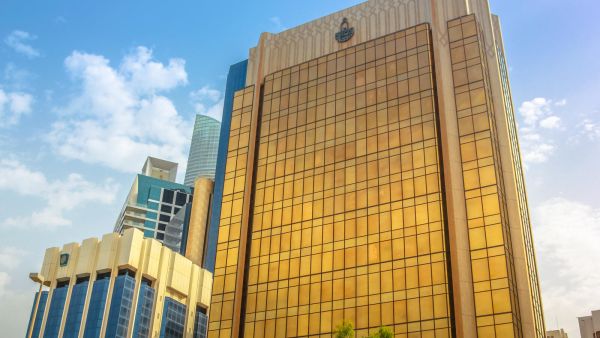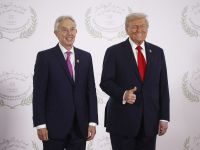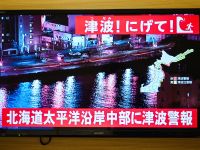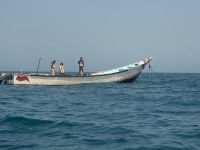In 2020, protests that began in the Arab world in 2010 continue. Lebanon, the latest country rocked by unrest has seen its elite face the common accusations of corruption and economic mismanagement. “What is happening is a complete economic breakdown,” explains Professor Rania Masri.
One option being considered amid unrest is shaking hands with the IMF. “An International Monetary Fund programme is an option for Lebanon,” one senior official was quoted as admitting, “depending on terms that should be bearable for the crisis-hit country and not trigger social unrest.”
The latter comment is a reminder of how the IMF is perceived by some as contributing to Arab unrest rather than alleviating it. Some analysts go so far as to suggest that the IMF itself has implemented policies that directly provoked protests. “At its most basic level, the IMF is an international banking organization that lends developing countries money on the condition that such countries adopt policies that the IMF feels stimulate economic growth and sustainability,” says journalist Ty Joplin. “Consistently, the IMF has called on governments to eliminate bread subsidies in the name of austerity and ‘tighter monetary policies’. Many times, this has led to protests, which become violent and are crushed. In the Middle East, IMF and IMF-inspired policies resulted in nearly identical backlashes.”
In truth, there already is an alternative to the IMF: the Arab Monetary Fund, established in 1976. Its members cover North Africa, the Levant and the Gulf and include states such as Jordan, Sudan, Egypt and Tunisia. States that have enacted IMF policies and witnessed unrest.
If a global organization is regarded by some as pushing economic measures that price out lower and middle class families and trap Arab states in a cycle of conditional loans, why has the Middle East not responded with regional unity and an attempt to created united but independent fiscal policy? In truth, there already is an alternative to the IMF: the Arab Monetary Fund, established in 1976. Its members cover North Africa, the Levant and the Gulf and include states such as Jordan, Sudan, Egypt and Tunisia. States that have enacted IMF policies and witnessed unrest.
What is the Arab Monetary Fund?
The AMF boasts 22 member states. Headquartered in Abu Dhabi, it promotes itself as a regional body aimed at strengthening Arab trade, financial markets and economic robustness. Long-term goals also include the creation of a “unified Arab currency”.
While the IMF focuses on internal socio-economics, the AMF advises members “with regards to policies related to the investment of the financial resources of member States in foreign markets”. All these aims are intended to promote regional unity and economic prosperity for all members.
In practice, the AMF appears to be a carbon-copy of IMF policies.
At a January 2020 meeting, AMF ministers discussed how aligning education and labour needs across the region will strengthen economic growth. The UAE model of economic diversification was praised as one to be replicated across the Middle East. “These meetings represent a vital platform to showcase the UAE model to the broader region,” boasted UAE Under-Secretary of the Minister of Finance Younis Haji Al-Khoori. “Furthermore, the model contributes to building a sustainable knowledge economy for future generations.”
In practice, the AMF appears to be a carbon-copy of IMF policies.
The AMF and the Arab Spring

The International Monetary Fund headquarters in Washington D.C (AFP/FILE)
Just as the IMF provides conditional loans, 2010-12 saw the AMF respond to the Arab Spring in kind. Jordan received a 76 million USD loan months after protest began against royalist victories in parliamentary elections. The loan was earmarked solely for “key financial reforms” and came atop 16 further AMF loans to Jordan totalling 350 million USD for domestic support and another 411 million USD for regional trade.
That same year, Ali Abdullah Saleh’s Yemen received a 200 million USD loan-pledge by the AMF for economic restructuring, bringing the total AMF loans to Yemen up to 800 million USD.
Only Morocco in 2012 received an AMF loan to specifically help with one of the central complaints behind protests: rising food prices. 127 million USD was issued by the AMF, which recognized the kingdom’s “urgent economic conditions, including the increased value of imported agricultural products.” The credit line brought Morocco’s AMF debt to 1.46 billion USD.
“Whenever the government raises taxes, cuts back salaries, reduces the public sector, the answer that comes back from citizens is that the government is corrupt,” says Tunis-based political analyst Youssef Cherif. “It provides an obstacle to any reform.”
Copying IMF lines on economic reform is not enough. As protestors will highlight, a central demand of the Arab Spring was not simply economic restructuring but an end to corruption. Austerity measures cannot be enacted without tackling what many Arab citizens perceive to be the root of their financial crises, which means cracking down on the elite. “Whenever the government raises taxes, cuts back salaries, reduces the public sector, the answer that comes back from citizens is that the government is corrupt,” says Tunis-based political analyst Youssef Cherif. “It provides an obstacle to any reform.”
A 2019 AMF report praises austerity as key to Arab economic growth. “[H]igher growth rates are recorded in some Arab countries in 2018 […] thanks to […] the positive effects of the implementation of economic reform [programmes], and to the adoption of more prudent fiscal policies.”
“The spread of multidimensional poverty in Arab countries resulted from a [reduction] of social services such as health, education and housing”. Like the IMF, the AMF insists on tax hikes and the slashing of subsidies.
Yet the same report admits the spread of poverty caused by the same IMF recommendations enacted by Arab regimes: the elimination of subsidies and welfare benefits. “The spread of multidimensional poverty in Arab countries resulted from a [reduction] of social services such as health, education and housing”.
Like the IMF, the AMF insists on tax hikes and the slashing of subsidies. Such a replication of IMF policies will only fuel the Arab Spring. “Governments in the Middle East and North Africa have consistently cut subsidies for key goods like gas and bread, despite the predictable backlash,” explains Joplin. “Each time it has happened, the cost of living has gone up, and discontent resurfaces. The most dramatic example is the Arab Spring, partially driven by the rise of bread prices and the general cost of living.”
In addition to the parallel policies between the AMF and IMF, there are other political factors that hinder regional independence from global (Western) institutions. The assistance of western forces in the 1991 Gulf War did not come cheap, and the AMF found itself billed for Kuwait’s liberation to the tune of almost 100 billion USD.
Although the 2003 Invasion of Iraq saw some Arab states compensated for their assistance, Iraq’s GDP fell by 28%. Iraq has been described by outside observers as a nation captured by debt. Such a ‘loan cycle’ returns to the legacy of IMF and AMF policies.
“The IMF has said it is changing its policies to encourage more stability and peaceful economic transitions,” says Joplin. “However, if the recent instability in Tunisia, Jordan and Sudan are any indicator, then it appears the IMF’s attempts at internal reform have already failed.”
IMF austerity measures should be a warning to the AMF that the Arab Spring is far from over. Yet, as of January 2020, the AMF recommendations of tax hikes are not being reversed
IMF austerity measures should be a warning to the AMF that the Arab Spring is far from over. Yet, as of January 2020, the AMF recommendations of tax hikes are not being reversed. Ironically, Tunisia, the starting point of the Arab Spring, claims the highest tax burden in the Arab world, at 20% of GDP. Yet, 8/10 Tunisians believe corruption remains in a country with public debt at over 70% of GDP. Taxes, loans and economic reforms are clearly not working to stabilise the Arab region. How long can the AMF remain an IMF mouthpiece before their relevance is questioned by Arab citizens?
The views expressed in this article do not necessarily reflect those of Al Bawaba News.









